Technique
It is of utmost importance to develop a good technique - it acts as the basis for every shot you play, so if you can spend some time working on developing a consistent technique, then every shot you play will see a benefit.
This section talks about the key concepts involved in holding a mallet and hitting a croquet ball. For more information on technique as it applies to specific shots in the game, then see the Shots section.
Grips and Style
How to hold a mallet is the most obvious thing to learn. Although no two grips are the same, fundamentally there are 3 main choices:
- Standard Grip
- Irish Grip
- Solomon Grip
Which grip you choose will mainly depend on comfort. Often the best way to choose a grip is to pick up a mallet without any instruction and swing it - you will usually pick one of the above grips without even realising it. Once you have found your most comfortable grip, then you can go about fine-tuning it. Whatever grip you choose, it is recommended to have your hands as close together as possible. The reason for this is that in order to develop a smooth, consistent pendulum swing, both hands must work together. If the hands are split apart, then there is a tendency for them to work against each other, with one moving forwards while the other moves back during the swing - this can lead to inconsistent results.
A right-handed player has their left hand at the top of the mallet, with their dominant hand below; conversely a left-handed player will have their right hand at the top. Interestingly there are a high number of "wrong-handed" players in croquet - who are right-handed but play left-handed, or vice versa - myself included.
Standard Grip
So named because it is the most common grip, and without too much instruction it can give a good balance between power and control.
The standard grip has the top hand with the knuckles facing outwards (away from your body) and the bottom hand with the knuckles facing inwards. Having the top hand knuckles facing outwards means that it is easier to generate power into shots, while having the bottom hand knuckles facing inwards means that the mallet is still easy to control and guide. It is important to ensure that both hands work together, despite facing in opposite directions.
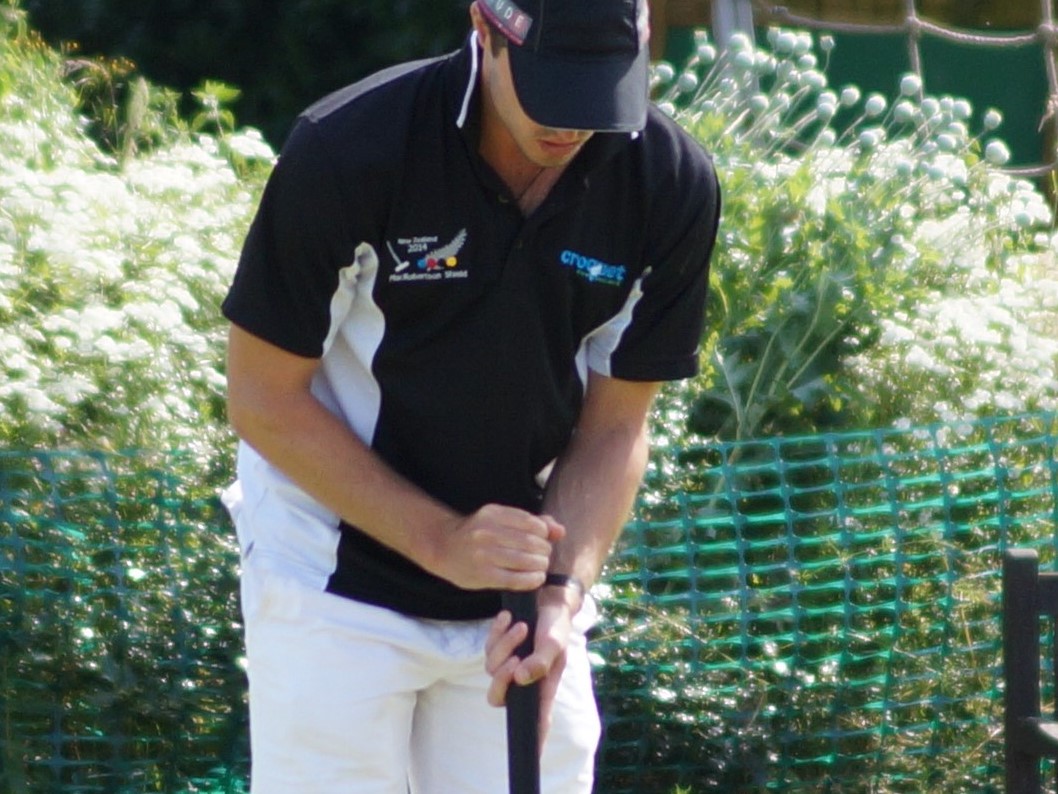
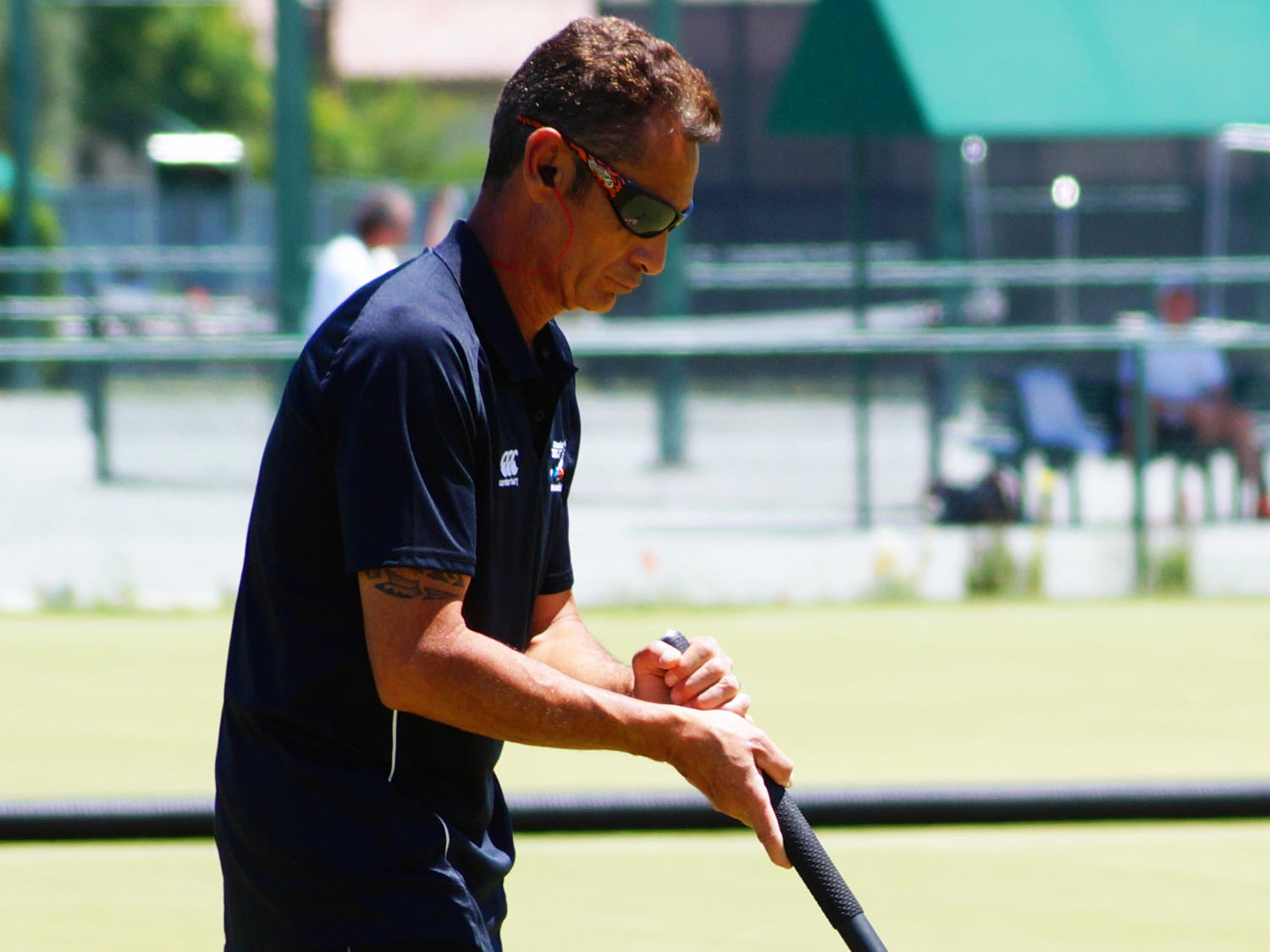
Some players feel more comfortable placing the thumb of the top hand on the top of the handle, whereas others tend to wrap the thumb around the handle itself. Variations can also be found with the index fingers of the bottom hand, with most players extending it down the handle to act as a guide.
Over years of playing, I have adapted my standard grip - I now play with the thumb of the top hand on top of the handle, as I used to find that I was more prone to twisting the mallet if the thumb was simply wrapped around the handle.
At every level, the standard grip is still the most commonly used. Examples of top players who use this grip are multiple World Champions Reg Bamford and Chris Clarke.
Irish Grip
This grip has the palms of both hands facing outwards, somewhat similar to how you hold a golf club. It is a very accurate grip and great for judging distances and control. On the other hand, many players find it difficult to get power into their shots with this grip. It can be quite hard on the wrists, particularly for the top hand, but this can be alleviated somewhat with a shorter mallet handle.

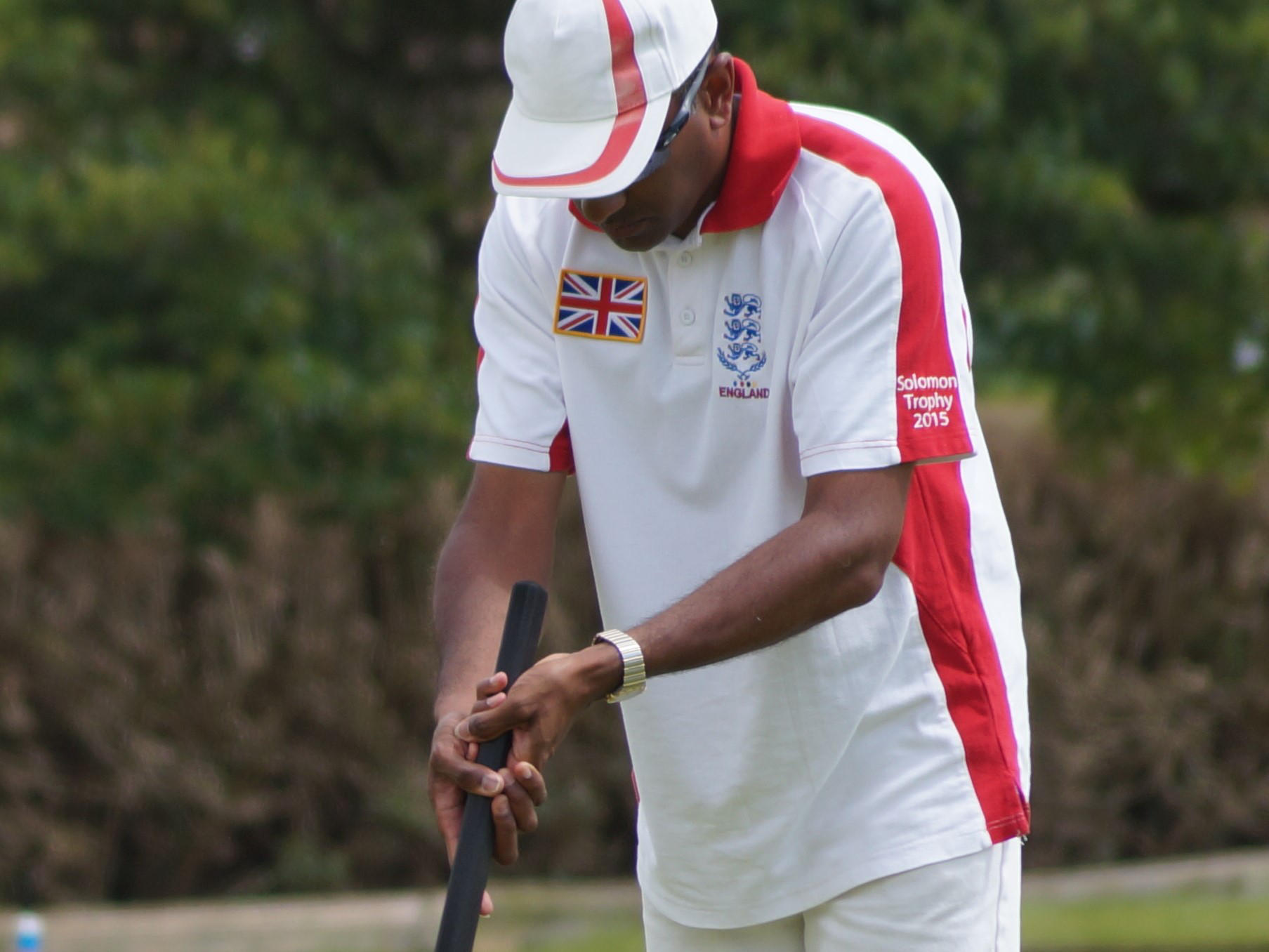
Many top players favour this grip, and examples include World Champions Robert Fulford and Stephen Mulliner.
Solomon Grip
This grip is named after one of the greatest ever players, John Solomon. The story goes that he started playing croquet as a small child and the only way that he could grip the mallet (which was as tall as he was) was with the knuckles of both hands facing outwards. As he developed into a top player over the years, his grip remained the same. Nowadays the Solomon grip is a very popular grip and is particularly good for generating a lot of power. It can take a while to master as it does not have the guiding bottom hand to help control the forward swing, however once mastered it is very accurate indeed.


Some of the best single-ball shot players of all time have favoured this grip - among them David Maugham and Jamie Burch.
Other grips and variations
Penholder
This grip is a variation on the Solomon grip, but tends to be referred to in its own right. The knuckles of both hands face outwards just as with Solomon, but the bottom hand grips the handle with the fingers / fingertips instead of the whole palm of the hand. Generally the hands are also slightly separated. Some players find this a very natural grip to play with.

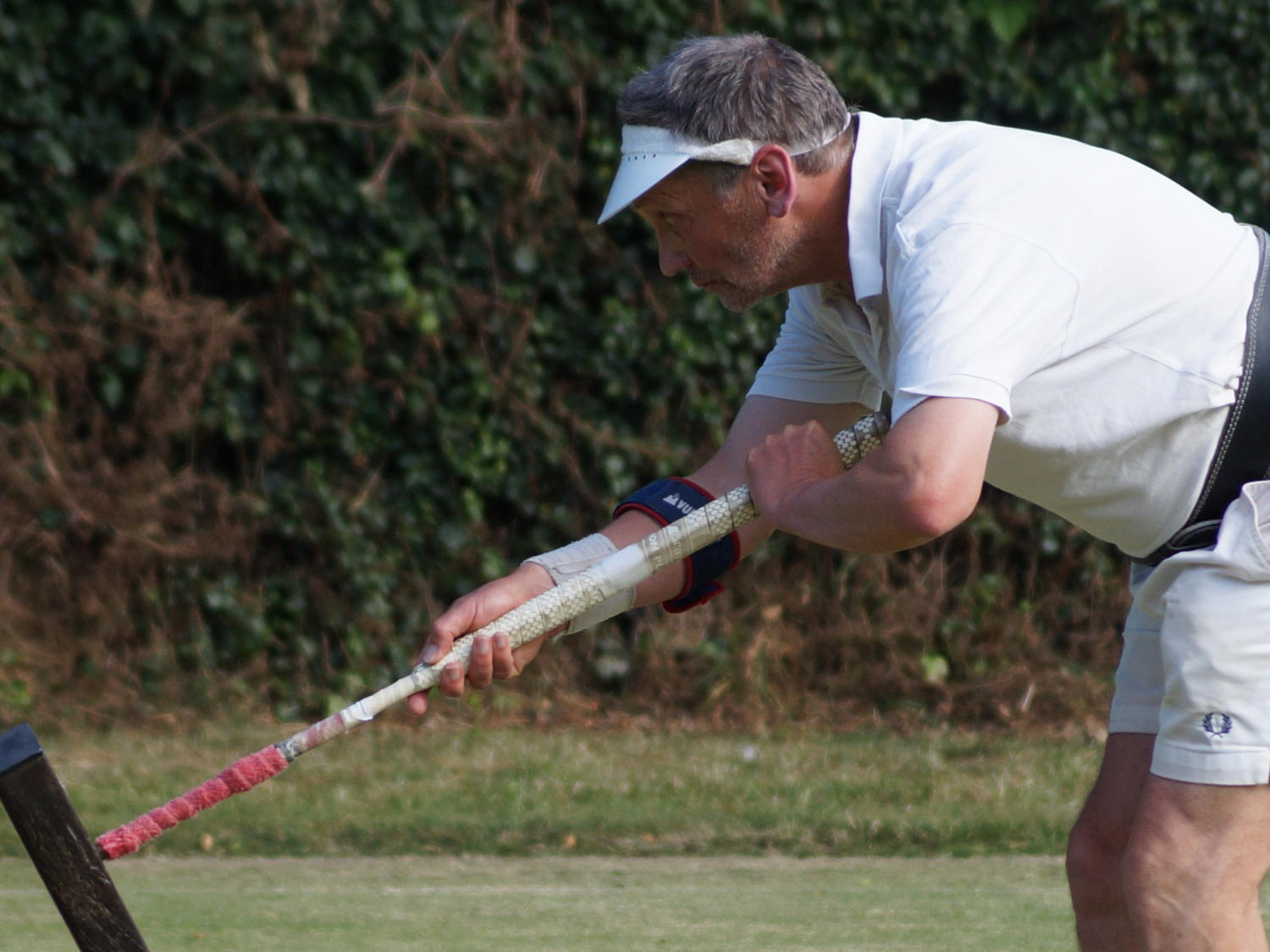
Split hand variation
Despite everything written above, the split hand variation is still one of the most commonly-used grips. Although I would not recommend this for the majority of players, if you can avoid the tendency for the hands to work against one another, then it is still possible to develop a consistent swing using this variation. It gives a very stable platform and due to the bottom hand being a long way down the handle it gives good control over the mallet without too much effort.
Centre-style vs Side-style
Fundamentally there are two distinct playing styles in croquet:
- Centre-style, where the mallet is swung between the feet
- Side-style, where the mallet is swung outside the body
Side style was once more popular in the days when women played competitive sport while wearing dresses. These days are long gone, and hence it is relatively rare to see croquet played side-style today. One distinct advantage that can be had from playing side-style is that of power - the mallet is swung outside of the body, and so the backswing is uninhibited. Most players do, however, find it harder to aim with this technique. One of Australia's top players, Stephen Forster, plays very successfully with a side-style technique, and is one of the most accurate break players in the game.

Centre-style is a universally accepted way to play croquet today, and most beginners would not even be shown anything else when they are learning. However if you have experimented with the various grips outlined above and are still struggling to get enough power into the shot, then side style is an option open to you.
The rest of this section is written on the assumption of centre-style.
Pre-Shot Routine and Stance
Stalking the ball
The single most important part of the aiming process is the stalk. This is the process of walking up to the striker's ball in a direct line of where you intend to aim. For long roquet attempts, the stalk may be 10 yards or more.
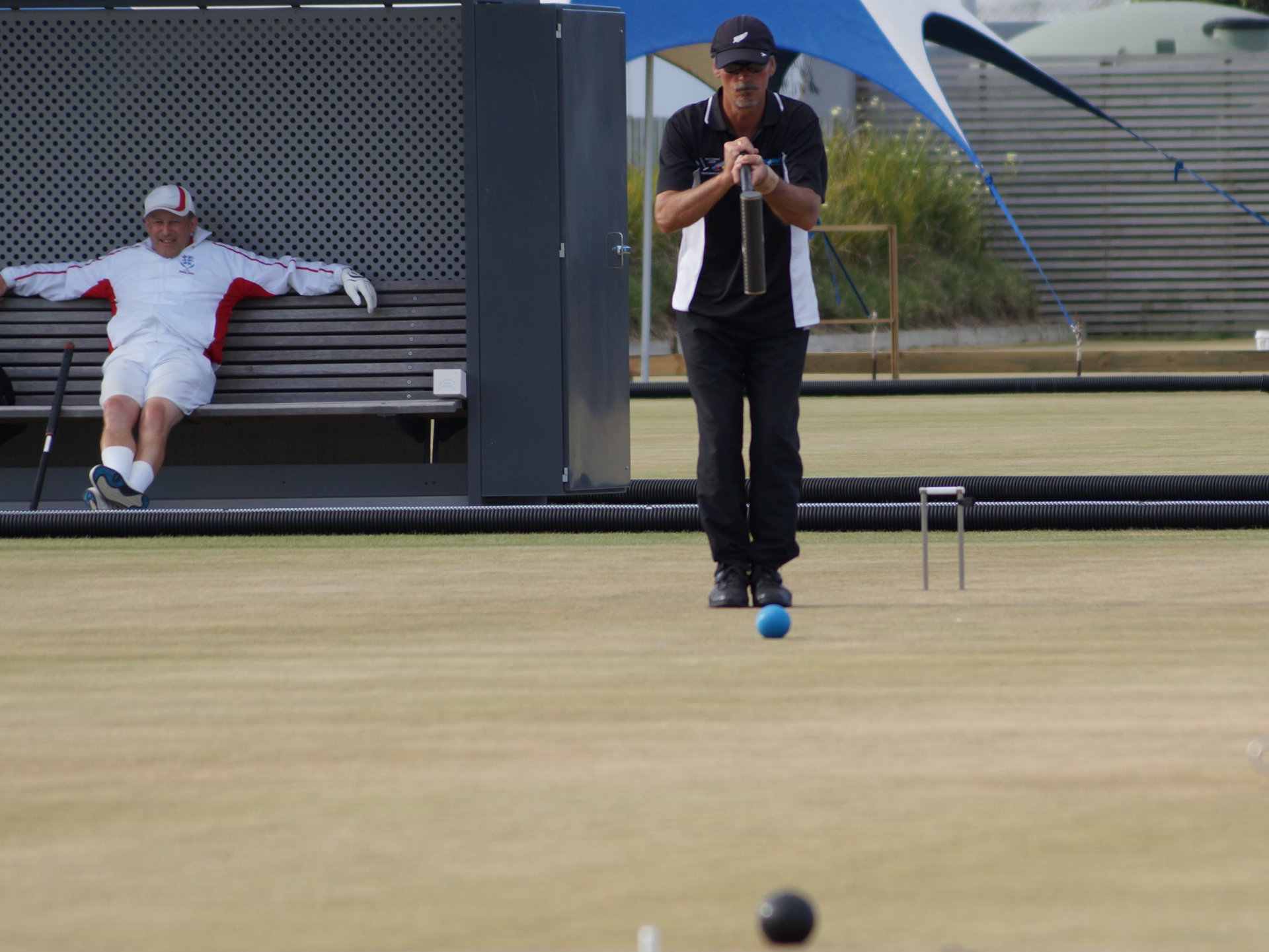

For shorter shots, such as running short hoops, it is still really important to go through the stalk routine (although maybe 2-3 yards would suffice there). It may at first be a difficult habit to get into, but it is absolutely fundamental for finding the correct line - it enables your body to be lined up correctly with the intended destination of the ball.
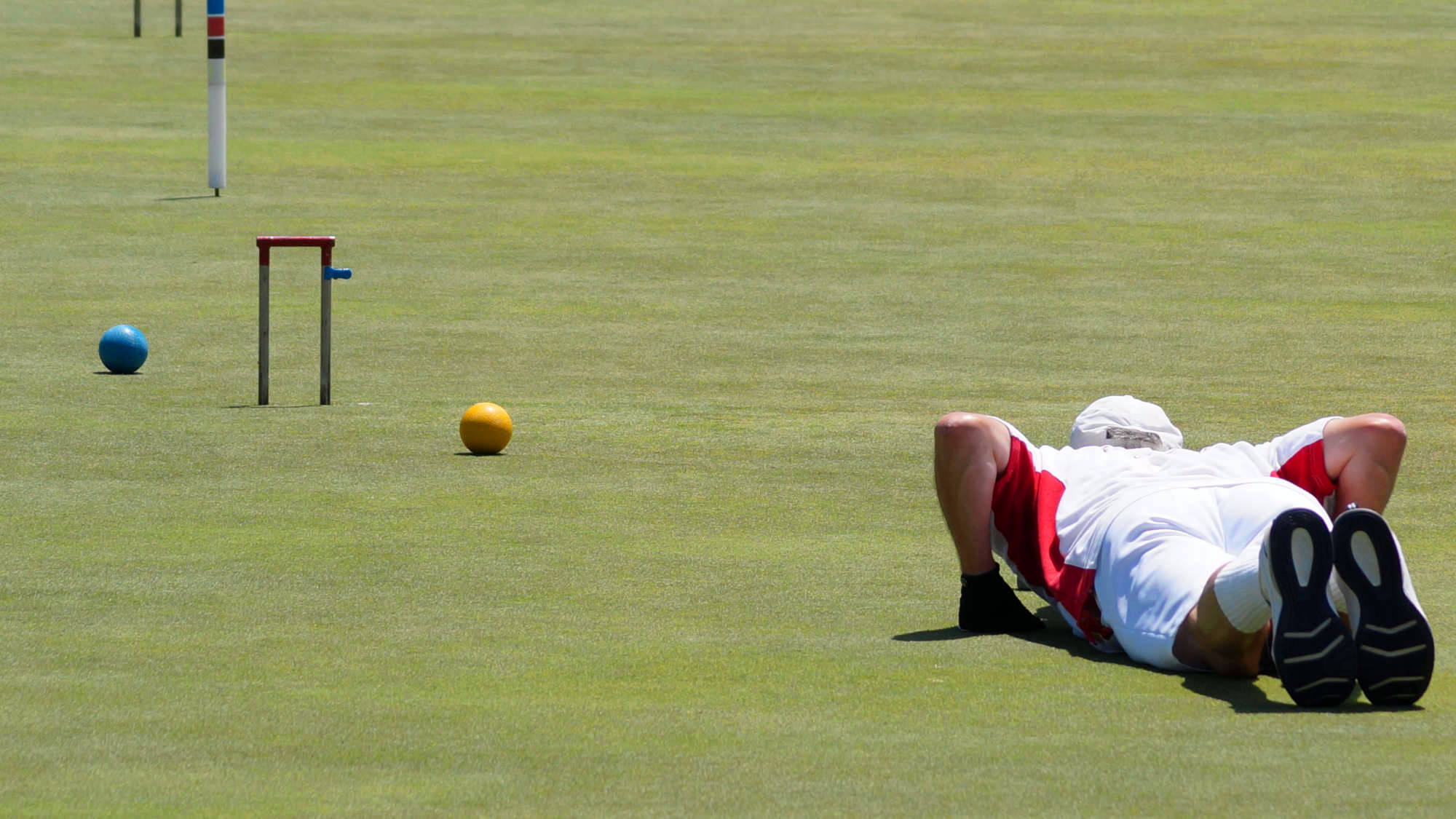
Once the stalk has been completed, no further tweaking of the aiming line should be done - doing so will only serve to misalign your body position with the mallet and lead to a miss. Many players however will choose to swing over the ball several times (called casting), which, among other things, can help to reassure that their aim is correct. If the aim is found to be incorrect, you should re-stalk the ball at that point.
Stance
As a general rule, after placing the mallet head just behind the ball before taking a shot, you should stand with your toes about level with the back of the mallet head. This will not only enable more power, but also encourage a fuller swing that uses the arms and not just the wrists. A mistake often made by beginners is to stand too close to the ball - doing so, they will find that it is hard to generate enough power into the shot, and also difficult to find the aiming line.
The feet can be level with one another, or staggered, with one foot in the normal position of having the toes level with the back of the mallet, and the other foot 6-12 inches further back. Staggering the feet provides stability and can help to prevent body movement during the shot. As a rule, right-handed players would stand with the right foot slightly further back, and vice versa for left-handed players. This can help to free up the swing so that the player's leg does not interfere with the bottom hand during the backswing. Again there are notable exceptions to this rule, such as double world champion Chris Clarke, who plays right handed, but with the right foot further forward than the left.
For me personally, for single ball shots I stand with my feet approximately level as I have found this to be most accurate.
Swing
Mechanically speaking, a croquet swing is quite simple, as it is generally done inline with the body. A good croquet swing should be like a pendulum, and should have a slow, unhurried backswing and smooth forward swing.
Casting vs stationary
Many players prefer to "cast" over the ball - that is, to swing the mallet back and forth over the top of the striker's ball - before hitting it - they do this to assist with aiming and also to ensure that their swing is smooth and already in motion before making contact with the ball. Most top-level players do some form of casting - good examples of this are Robert Fulford, David Maugham and Greg Bryant. However, it is not necessary to cast in order to play well - players like Reg Bamford and Jose Riva address the ball from a stationary position and simply take one swing to hit the ball.
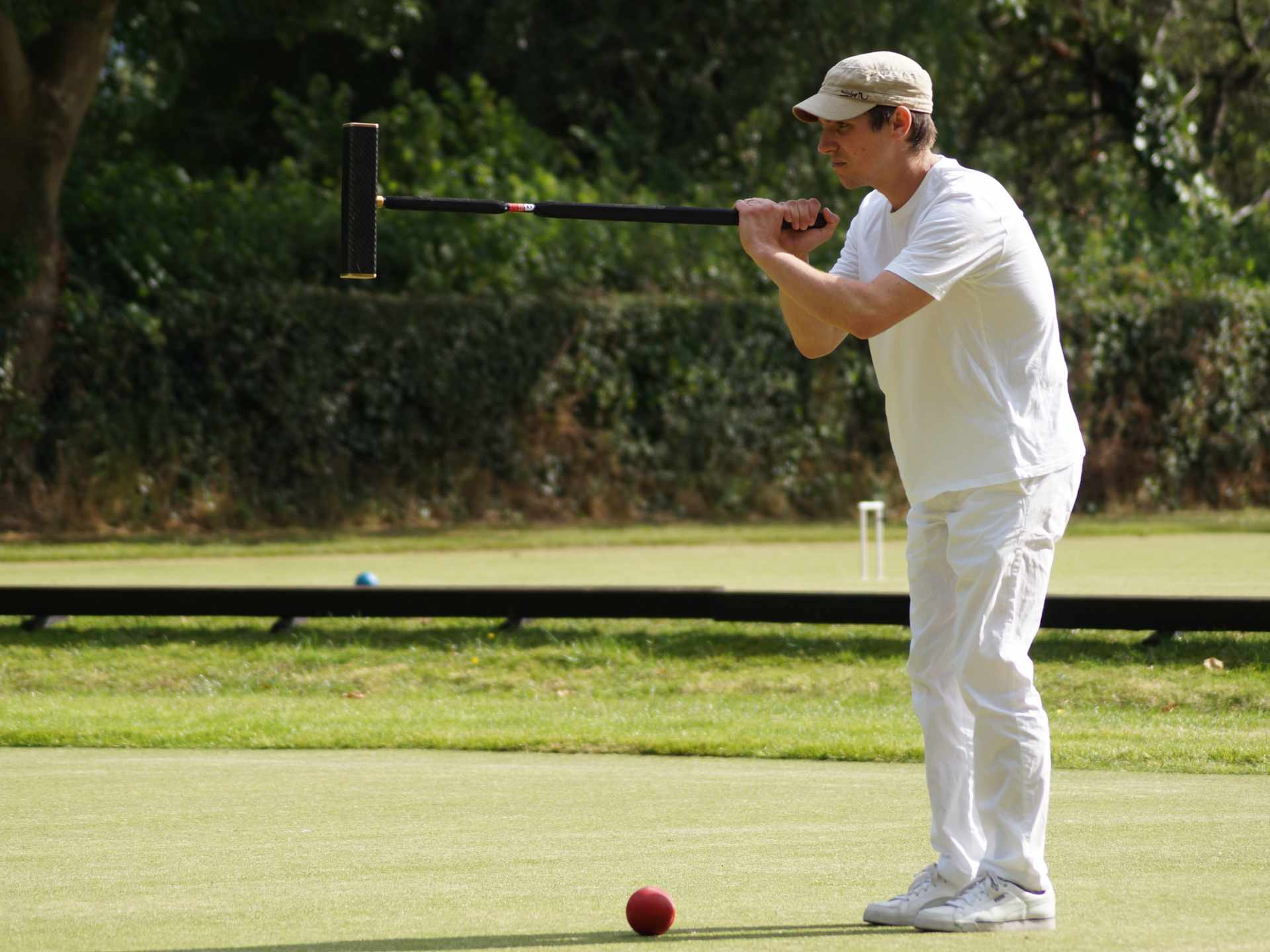
Irish Grip players do tend to cast more than others, and probably the main reason for this is that the backswing is appreciably more difficult with the Irish grip, and so casting enables the swing to gradually build to a moving position before striking the ball.
Experiment with both the casting and non-casting methods to find what works for you.
Arc of the swing
Ideally the fewer muscles involved in the croquet swing, the better. That is why it is recommended to swing the mallet from the shoulders, minimising wrist and elbow movement. This means that the swing will be done, for the most part, by the larger muscles, while the smaller muscles in the wrist that can cause the mallet to twist, are not flexed. In reality, very few players play with a fully shoulder-driven swing as it would feel quite unnatural, but there is still some merit in minimising wrist movement in particular. It is worth noting that many very good players have wristy swings - Robert Fulford is a prime example of this.
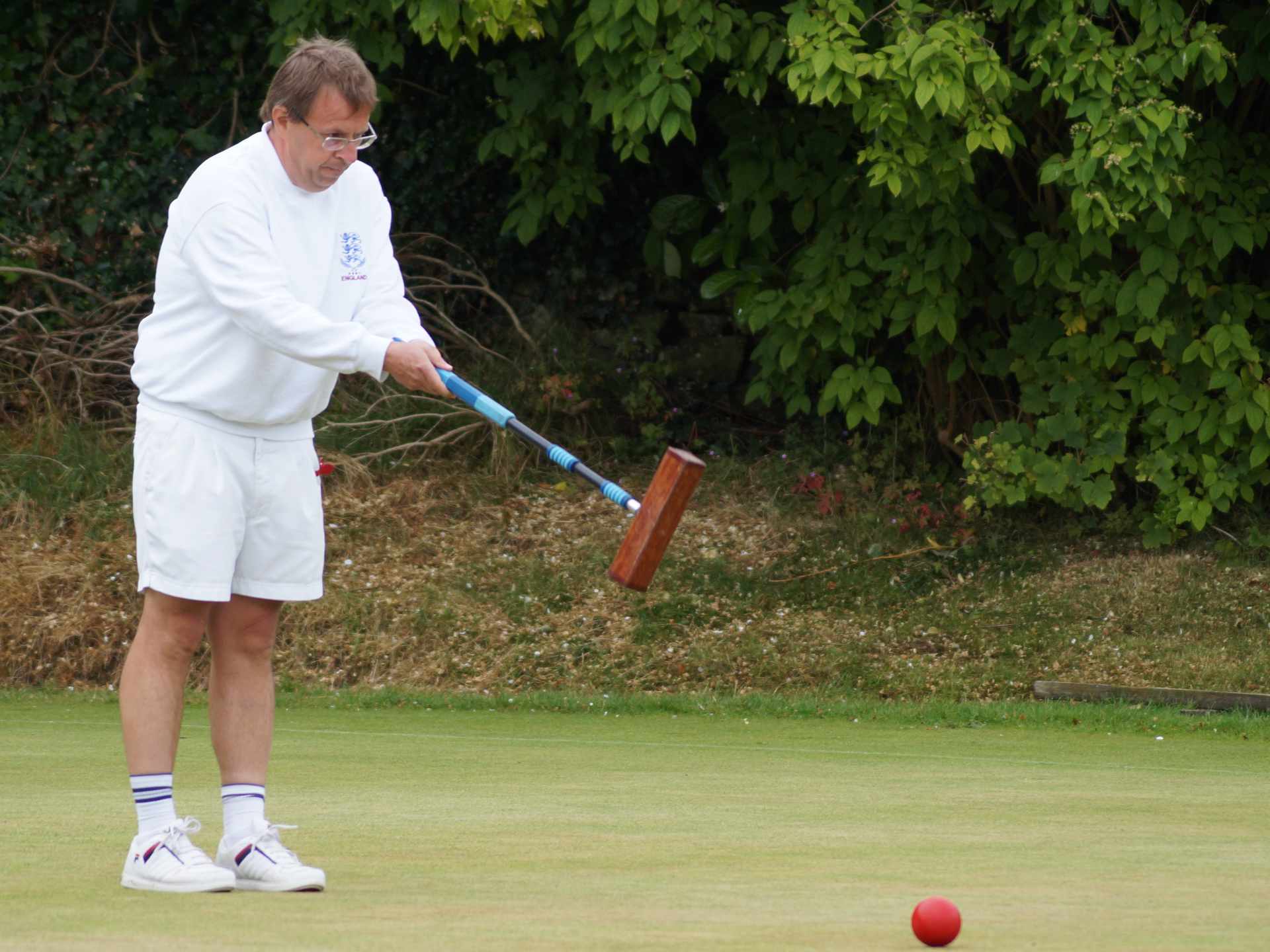
While there are lot of mechanics and variables involved in a wristy swing, the key to developing into a good player is to build consistency in whatever swing you use. Having more variables in the swing means that there is theoretically more to go wrong, but if you find a more wrist or elbow-driven swing comfortable and you are able to play a wide range of shots with it, then my advice would be to practise hard with it so that it becomes as repeatable as possible.
Hitting the ball
Hitting the ball with the mallet - the key component to playing good croquet. It is fair to say that this skill is easy to learn but difficult to master. To strike one's own ball correctly, in the centre of the mallet face every time will bring great consistency to your game. In order to do so, the rest of your technique up to this point must be consistent.
During your backswing before hitting the ball, you should be focusing only on your ball, and upon making contact with the ball, resisting the temptation to lift your head to check where the ball has gone. This is a key part of striking the ball consistently - if you lift your head as you make contact with the ball, it can raise the shoulders and the arms, and result in an inconsistent strike and consequently a missed roquet. A croquet swing is fundamentally simple, particularly when compared to complex swings found in golf, and you should do everything you can to keep it that way by avoiding introducing unnecessary variables such as body movement that can lead to a miss.
While players who cast over the ball may be reassured that their aim is correct, beware that too much emphasis spent on working out the aiming line can lead to less focus on the main element of actually playing a shot, which is of course striking your ball with the mallet in the centre of the mallet face. When casting, ensure that by the time you are taking your final backswing, you are focussed solely on the striker's ball, and on striking it cleanly.
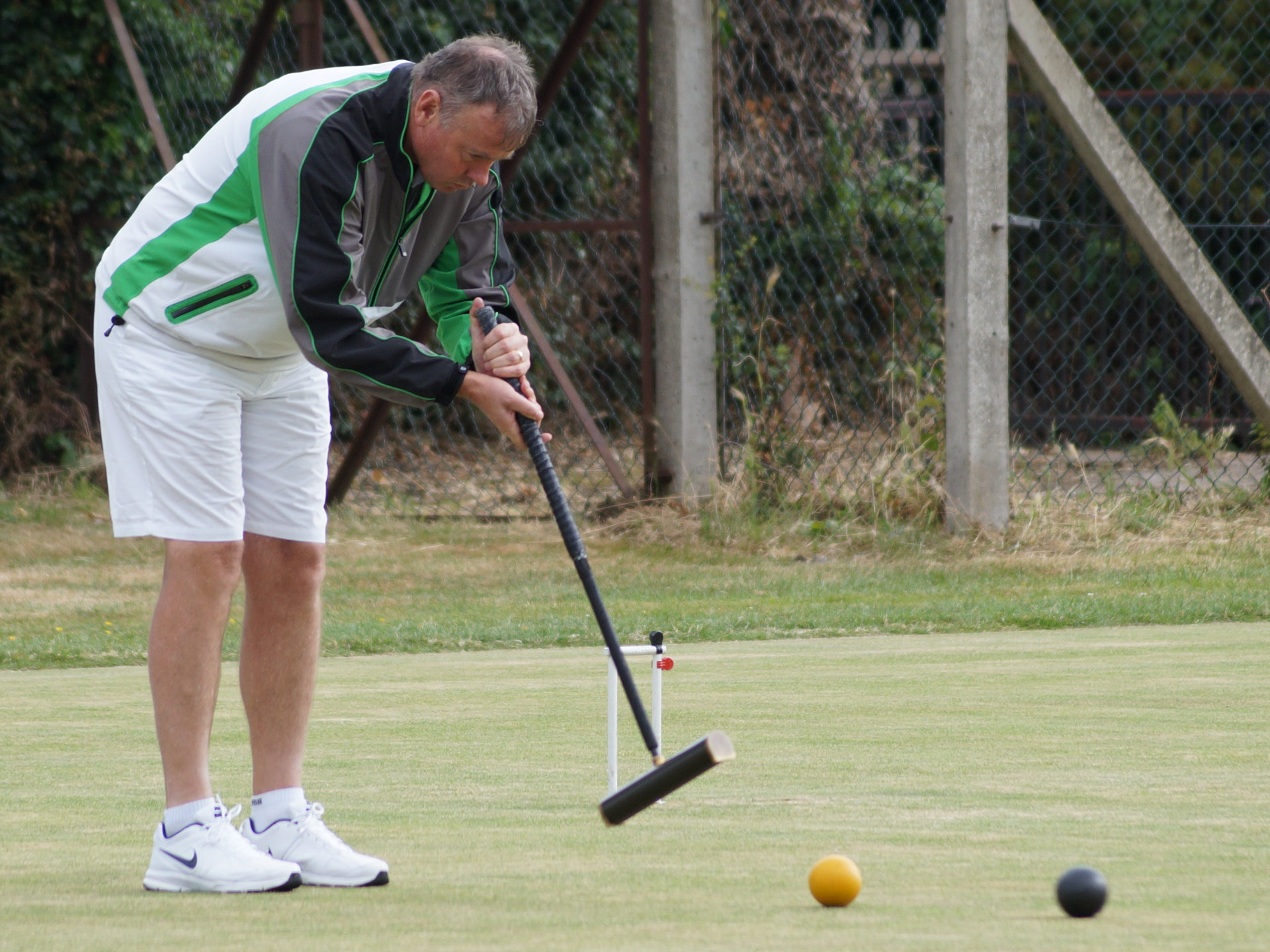
The forward swing should not be forced, but rather should continue at the same pace as that of the backswing. The strength of the shot therefore should be determined by the height of the backswing, not the force of the forward swing. When the mallet reaches the top of the backswing, gravity should be the main force moving the mallet forwards, with the hands and arms mainly serving to guide the mallet on its way through. If the forward swing is forced, then it means that muscles are being used to propel the mallet forward, which can result in twisting.
Putting it all together
A picture is worth a thousand words; a video is worth a thousand pictures. Below is a video showing two 5-time world champions (Reg Bamford and Robert Fulford) hitting a croquet ball. Note that although their individual styles are quite contrasting, they both incorporate everything discussed above - the stalking of the ball; taking their stance well back from the ball; the smooth, unhurried swing; keeping their head down until after the ball has been struck.